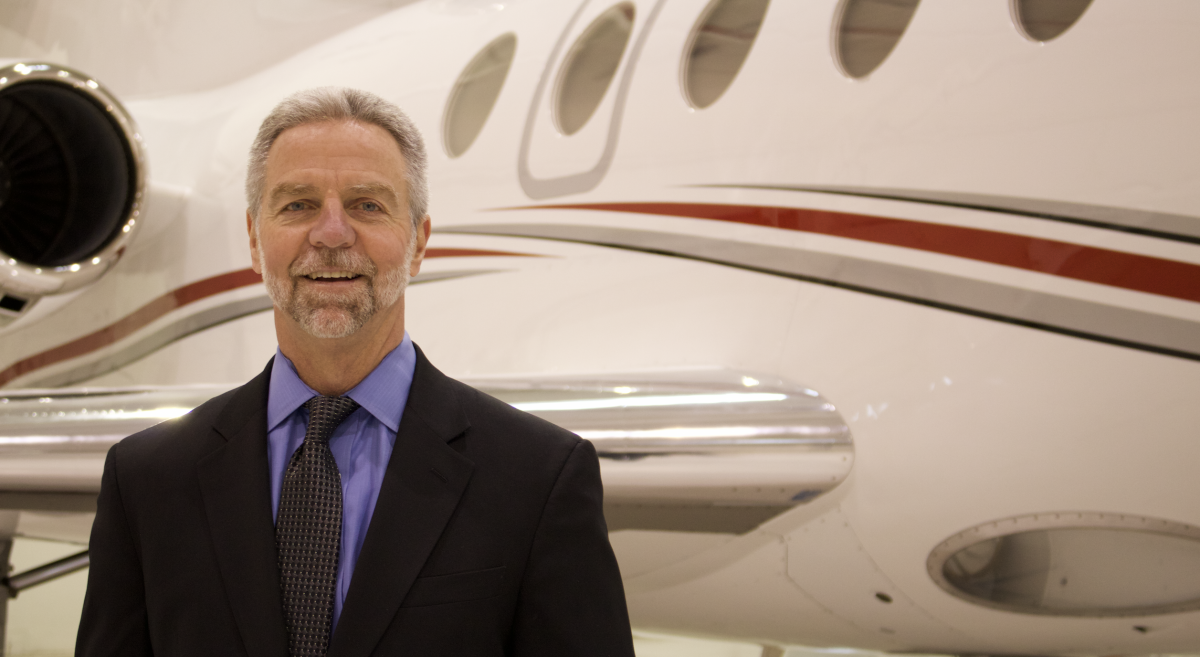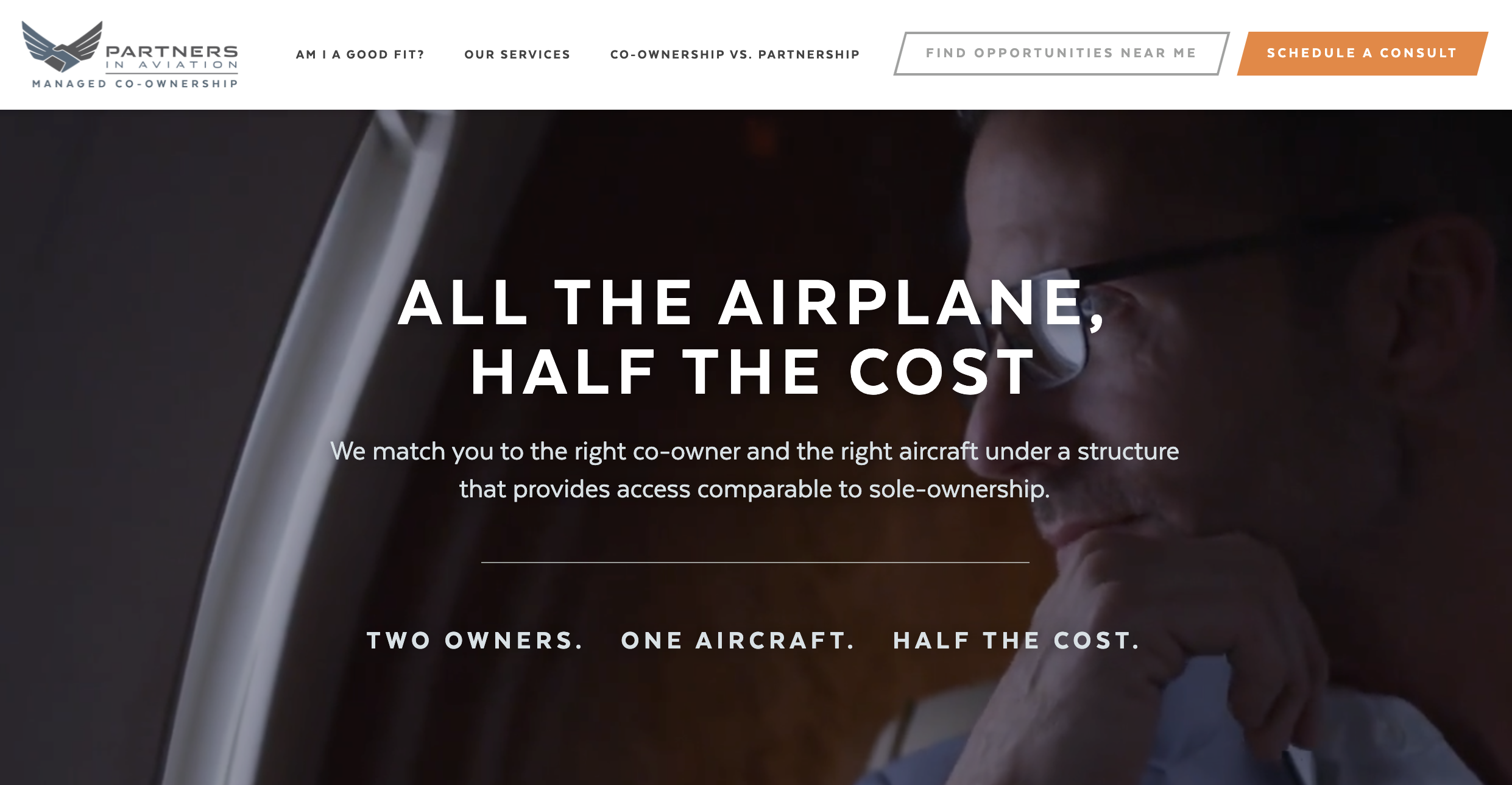Using a contractual model similar to fractional ownership, Partners in Aviation wants to be the Match.com of private jets.

Seeking to bridge the gap between full ownership and fractional shares and jet cards, Partner’s in Aviation moves into its fourth year in the market seeking to be the Match.com of private jet owners. Most of all, its principal Mark Molloy, a former Beechcraft executive, says the PIA formula is structured to avoid the pitfalls of those multi-owner partnerships that often don’t end well.
The service targets both current private jet owners and non–owners. PIA offers an alternative to selling the aircraft if you aren’t flying enough in the owners’ case. For non-owners, it offers the benefits of ownership at half the cost.
Customers only pay PIA if it’s successful in consummating a deal, although you make a refundable deposit akin to what you would pay an aircraft broker. Molloy says it means that customers are serious, so you don’t end up wasting time. Over the past two years, the rate of customers who end up walking down the aisle increased to 80% from 50%.
In many ways, the process is similar to buying a jet, except it starts with finding the right partner. You don’t have to fly out of the same airport, but owners are typically within a 20-to-25-minute flight of each other. One pair of partners splits their jet between Palm Beach and Miami-Opa Locka.
At the outset, PIA identifies if you are even a fit before you start dating.
The flight calendar entails alternating weeks, typically Monday to Monday, although that can be negotiated. Holidays alternate by year. You can use the aircraft when it’s not your turn if your co-owner doesn’t need it. Just pay ferry fees, if there are any. “You buy the aircraft for $4 million instead of $8 million, and you pay repositioning fees a couple of times a year,” says Molloy.
The concept works best for folks who fly 75 to 125 hours per year, are flying four or five times a month, plan their trips, or have the flexibility to fly in their weeks. When you know you won’t need the plane, you can release those dates. De facto, the co-owners end up with access about 25 days per month.
In addition to making sure you are compatible – if you are allergic to cats, you can stipulate no cats on the jet before PIA seeks your sky match – the company helps identify potential aircraft, if neither partner has one, and then leads you through the full buying process, including its legal team to work with yours to get the deal done.
PIA also helps the two co-owners identify the best management company options. Sometimes one owner will already have a favored option that can be considered. As typical, the management company organizes hiring pilots, hangar leases as needed, and all the elements you expect. Partners also decide if they want to make the aircraft available for Part 135 operations.
The option works for those of you who are pilots as well. “We have some owners who turn right and some that turn left,” Molloy tells Private Jet Card Comparisons.
Most importantly, the deal structure removes typical friction. While there is an online calendar, requests between owners are channeled through the management company. Molloy says the structure, which minimizes contact with your air spouse, means less friction and a happier marriage. The standard ownership term lasts three years. There are mutually agreeable one-year auto-renews after that. There is also an escape clause if you need to exit early. How the aircraft will be sold is also part of the contract, so there are no surprises.
Molloy says that the pre-deal vetting process and dealing with all of the friction points in advance are key. The co-owners each pay their own expenses such as fuel, airport fees, and catering.
The time to make a match can be as short as 30 days. In some cases, it has taken over a year. Speed is largely based on the type of aircraft you want to co-own and where you live. Light and midsize jets had been the sweet spot although, there is a growing interest in super-midsize aircraft. If you are in South Florida, the Northeast, Houston, Dallas, the San Francisco Bay Area, or Seattle, there is a larger pool of potential partners. That said, Molloy just did a deal for a client based in Glacier Park, Montana.
He says the best way to convince prospects that properly structured co-ownership can work is to have them talk to existing clients. While he declines to say how many marriages PIA has consummated, he says there are enough success stories to connect prospects with owners who are flying the same type of aircraft you are looking at.
While PIA has done deals for new jets, the used market is more attractive to his “value-oriented” prospects. He says the ideal aircraft are typically manufactured between 2000 and 2015, bringing significant depreciation and modern avionics to the relationship.
PIA was launched in 2016; however, it took two years to develop the right structure. He says that legal structure, developed by experienced aviation lawyers, has made co-ownership attractive for those of you who have been reticent about those murky partnerships where it’s unsure whether they truly meet FAA regulations.
Molloy says PIA’s 2020 was similar to the rest of the industry. A deep dive in March, but then a strong finish led to a record year. It’s currently running about 90 days to find a match. Then it takes another six to eight weeks to complete the purchase once the right aircraft is identified. So, it’s similar in many cases to if you were doing it yourself.
In addition to aircraft owners who want to cut costs, Molloy says a significant percentage of clients are former jet card flyers. He says that at 50 to 75 hours, they are looking for a more cost-effective solution and are open to a longer commitment, and don’t need short-notice guaranteed availability.
